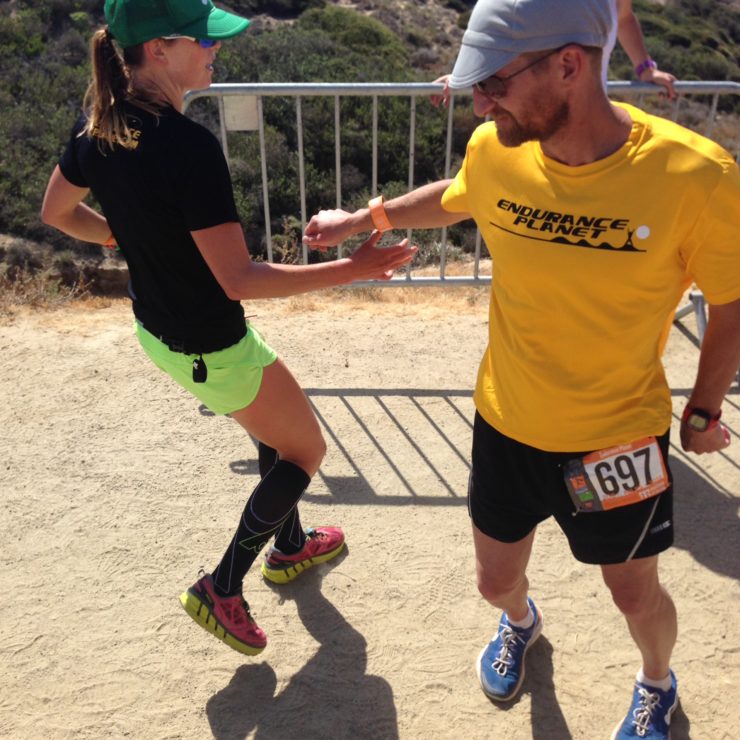ATC: Developing World-Record Marathoners, Bounce Back from a Plateau, Farmer Carry Love and More
December 4, 2015
This episode is brought to you by UCAN Superstarch, the incredible fuel for fat-adapted and metabolically efficient athletes looking to maximize sports performance and optimize health. Even if you’re not fully fat adapted yet, UCAN still works in your journey to becoming a better fat burner. UCAN is gluten-free, non-GMO, all-natural and burns cleanly in the body. Through Dec. 6, get 25%* off UCAN and free shipping. Or head to generationucan.com/enduranceplanet for the same deal.
*Regular discount to EP fans is 15% off.
Want to join the EP crew including Lucho for Ragnar SoCal April 1-2, 2016?! Email us now at events@enduranceplanet.com! It’s going to be epic, don’t miss out.
- Lucho runs a 5k Turkey Trot; Tawnee runs to and from her Turkey Trot
- Followup on buying and building a bike: Talking components, electronic vs. manual gears, brakes, combining different brands, frame sizing and more.
- Why is it that there have been no world record holders in marathon running coming out of the U.S. lately? Will there be in the (near) future?
- Looking at today’s youth runners and how to reasonably and safely develop a future marathon champ in the U.S.
- How to incorporate the MAF Method for marathon training when coming off injury? “Coming back from peroneal tendinitis, starting back up with running from zero, wanting to safely build up mileage. And should there be speedwork?”
- Tawnee’s journey on training using the MAF Method for an open marathon at her blog tritawn.com; refer to January thru May 2015 posts.
- Master’s athlete stagnating/plateauing with LSD/MAF training and looking to incorporate higher-intensity training. “After 8 years of gains, I am now just getting slower (and slower) and I want to turn that around.”
- Adding weights to the training program
- Farmer carry love
- Defining speedwork and comparing it with tempo/threshold workouts
- The tie in with polarized training
- Live high/train low: If one does not have that luxury of living high could intermittent hypoxia (say an hour a day) be of value?
- Reference to our last ATC episode that covers the “Effects of intermittent hypoxic training (IHT) followed by intermittent hypoxic exposure (IHE) on aerobic capacity of long-distance runners.”
Add your thoughts

One Comment
I really enjoyed the discussion of American vs African runners. Interesting that Lucho mentioned diet first, since in contrast to typical EP discussion, the African diet is plant based and very high carb. Typical all through Africa, Asia, the Americas, basically anywhere with limited exposure to Western culture and money. The Blue Zones are an interesting example of what that diet can do with some basic health care and less stress. Loved the discussion on high school athletics. My niece just started XC as a freshman with no running experience and streaked to the top. I watched the "flog them hard, flog them often" coaching first hand. I can't say anything though, I just have to watch for the inevitable injuries and burnout.
Along with the doping among the Kenyans, I've wondered about doping in the age grouper ranks. I've read that most doping goes on with regular guys in the gym crowd who just want a particular physique, even without money on the line. I've wondered about it in endurance racing. When I see $10K bikes racked on $50K SUVs at races, I wonder, what's another thousand to get on the gear? There have been some recent articles in Velo news: http://velonews.competitor.com/2015/12/news/age-g…
http://velonews.competitor.com/2015/11/news/anti-…
What do you two think?